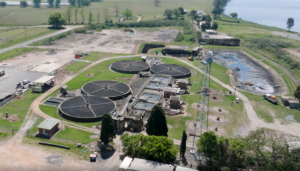
Melbourne has emerged as a frontrunner in the competitive race for new data centres, overtaking Sydney for the first time in this multibillion-dollar sector. The state government is leveraging outdated manufacturing land to attract leading technology companies amidst a booming demand driven by advancements in artificial intelligence and cloud computing. This rapid development, particularly in the city’s western and north-western suburbs, raises questions about the sustainability of local electricity and water resources.
Danny Pearson, Victoria’s Economic Growth Minister, highlighted the government’s commitment to expediting planning processes to facilitate the establishment of additional data centres. The availability of more affordable land has positioned Melbourne advantageously compared to Sydney. According to Pearson, much of Victoria’s vacant industrial land, a remnant of the region’s former manufacturing dominance, is already equipped with necessary utilities, making it ideal for the burgeoning data centre industry.
Reflecting on the transformation, Pearson stated, “Thirty-five years ago we were seen as the rust-bucket state – as the tariff laws came down, a lot of those industries were no longer viable and shut up shop. I think there’s an opportunity now to have that land repurposed for data centres.”
Currently, approximately 48 operational data centres serve the state, with an additional 20 facilities in the pipeline. These range from expansive “hyperscale” centres operated by major tech firms like Amazon to smaller “colocated” centres catering to businesses seeking to rent space. Recently announced is a significant $2 billion facility in Fishermans Bend, further solidifying Melbourne’s position in this sector.
The expansion of data centres is largely attributable to the explosive growth in cloud computing and the rising popularity of artificial intelligence tools, such as ChatGPT. These facilities typically resemble large industrial warehouses, sometimes covering tens of thousands of square metres, and are equipped with servers and storage systems necessary to handle vast amounts of data.
As the demand for data processing and storage capabilities escalates, the challenge remains for local authorities to balance economic growth with environmental sustainability. The influx of data centres could strain the state’s electricity and water supplies, prompting discussions about how to best manage these critical resources in light of rapid industrial growth.






